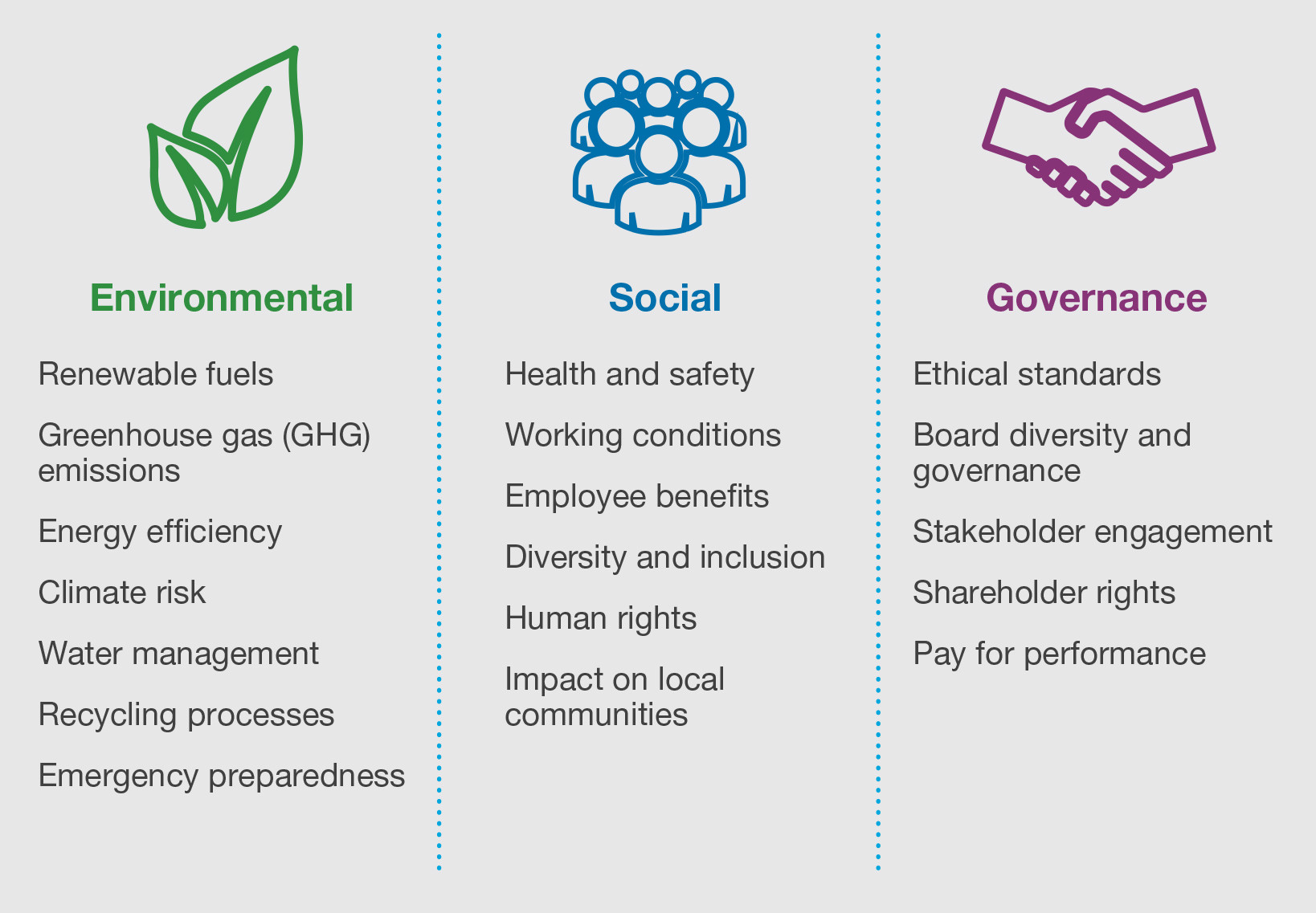More and more attention is being paid to the environmental, social, and governance (ESG) factors of a company. And for good reason – investors are becoming increasingly interested in whether or not companies are adhering to high standards when it comes to these areas. But how to measure ESG metrics of a company?
In this guide, we’ll go over everything you need to know about how to measure ESG for your business. We’ll also discuss the benefits of doing so and explain how setting up an effective system can help improve your bottom line.
Table of Contents
Sustainability ESG Metrics
In general, sustainability metrics are those that track a company’s performance in areas related to environmental and social responsibility.
Here are a few examples of common sustainability and ESG metrics:
Carbon emissions: This is one of the most commonly tracked sustainability metrics, and for good reason. Carbon emissions are a major contributor to climate change, so measuring and reducing them is a key part of any company’s sustainability strategy.
Water usage: Water is another important resource that is often impacted by business operations. Measuring water usage can help companies identify areas where they can reduce their impact.
Waste: Tracking waste is another way to measure a company’s environmental impact. This can include everything from the amount of waste produced to the percentage of waste that is recycled or diverted from landfills.
Energy usage: Energy usage is another key metric for sustainability. Measuring and reducing energy usage can help companies save money while also reducing their environmental impact.
These are just a few examples of the many different sustainability metrics that companies can track. The important thing is to find the metrics that make the most sense for your company and your specific goals.
Social ESG Metrics
Are you wondering how to measure the social impact of your company’s ESG policies? While it’s important to focus on the “triple bottom line” of people, planet, and profit, the “S” in ESG stands for social, and social ESG metrics are a key part of assessing and improving your company’s sustainability.
There are a number of ways to measure the social impact of your company’s policies and practices. One way is to track the number of employees who are engaged in social and environmental initiatives. This could include volunteering, participating in community service projects, or using sustainable transportation options.
Employee satisfaction is a key metric for social responsibility. Measuring employee satisfaction can help companies identify areas where they can improve working conditions and the overall employee experience.
Diversity is another important social responsibility metric. Tracking diversity can help companies ensure that they are hiring and promoting a diverse workforce.
Another way to measure social impact is to track the number of employees who are taking advantage of flexible work arrangements. This could include working from home, flexible hours, or compressed work weeks. Tracking the number of employees who are taking advantage of these arrangements can give you a sense of how your company’s policies are impacting work-life balance.
Finally, you can also measure the social impact of your company’s policies by surveying employees. This could include asking questions about job satisfaction, engagement, and retention. Surveying employees can give you valuable insights into how your company’s policies are impacting morale and motivation.
Governance ESG Metrics
For the “G” in ESG, governance metrics might include things like the number of women on your company’s board or the number of employees who have completed training in anti-corruption compliance. You can also look at measures like how often your company is involved in shareholder lawsuits or the total number of environmental incidents your company has had.
Looking at all of these different metrics can give you a good sense of how well your company is doing in terms of ESG. Of course, you also want to make sure that you are constantly striving to improve in all of these areas.
By paying attention to your company’s ESG performance and making sure that you are always working to improve, you can help make your company a leader in sustainable and responsible business.
 (Source)
(Source)
How to Measure ESG for Your Business
Environmental, social, and governance (ESG) is a set of standards for a company’s operations that socially conscious investors use to screen potential investments. Many large companies are now incorporating ESG into their business practices.
There are a number of ways to measure a company’s ESG performance.
One popular method is the Dow Jones Sustainability Index. On a scale of 0 to 100, companies are scored based on their environmental, social, and governance practices.
Another way to measure ESG is through the GRI or Global Reporting Initiative. The GRI is a set of voluntary guidelines that companies can use to report their environmental and social performance.
There are a number of other ESG rating systems out there but these are two of the most popular.
When considering an investment, it’s important to look at a company’s ESG performance to get a sense of how well they are doing in terms of social and environmental responsibility.
The Benefits of Measuring ESG
The benefits of measuring your company’s environmental, social, and governance (ESG) performance are numerous.
Not only can it help you identify areas where your company can improve, but it can also help you communicate your company’s commitment to sustainable and responsible practices to your stakeholders.
ESG reporting can also help you benchmark your company’s performance against others in your industry. This can be valuable information when making decisions about where to allocate resources or how to improve your company’s operations.
Ultimately, measuring your company’s ESG performance is a key part of ensuring that your business is sustainable and responsible. It can help you identify areas for improvement and make better decisions about how to operate your business.
Setting Up an Effective System for Measuring ESG
There’s a lot that goes into setting up an effective system for measuring environmental, social, and governance (ESG) factors. But, with a little bit of planning, you can develop a system that works for your company.
To get started, you’ll need to decide what factors you want to measure. You can use the Global Reporting Initiative’s (GRI) Sustainability Reporting Guidelines to help you identify relevant ESG factors.
Once you’ve decided which factors to measure, you’ll need to gather data. This can be done through surveys, interviews, data collection software, or other means.
Once you have your data, it’s time to start analyzing it. This is where you’ll need to decide which metrics to use.
There are a variety of metrics that can be used to measure ESG factors, so it’s important to choose the ones that are most relevant to your company. Once you’ve chosen your metrics, you’ll need to set up a reporting system.
This will help you track your progress and identify areas where you need to improve. If you follow these steps, you’ll be well on your way to setting up an effective system for measuring ESG factors.
Tips and Tricks for Getting the Most Out of Your ESG Measurement System
Are you looking to get the most out of your ESG measurement system? Here are some tips and tricks to help you do that.
1. Know Your Goals
What are you trying to measure and why?
Knowing your goals will help you select the right ESG indicators and data sources.
2. Select the Right Indicators
Not all indicators are created equal. Select indicators that are relevant to your goals and that are supported by data sources that you trust.
3. Collect Data from Multiple Sources
Relying on a single data source can lead to inaccurate or incomplete data. Collect data from multiple sources to get a more complete picture.
4. Use Data Visualization
Data visualization can help you make sense of large data sets and see relationships that you might not otherwise see.
5. Be Prepared to Adjust
As your understanding of ESG issues evolves, your measurement system should evolve with it. Be prepared to add or remove indicators and data sources as your needs change.
FAQs About How to Measure ESG
How is ESG score measured?
The Environmental, Social, and Governance (ESG) Controversy category score is a measure of how much media attention the company is getting on 23 different controversial topics.
What metrics are used to measure ESG?
Some commonly used metrics include greenhouse gas emissions, energy consumption, water usage, waste generation, employee satisfaction, and community engagement.
What are KPIs for ESG?
ESG Key Performance Indicators (KPIs) are metrics that measure a firm’s impact and performance on environmental and social issues.
Conclusion
How to measure ESG is important for businesses as it can have a direct impact on their bottom line. By setting up an effective system for measuring ESG, businesses can improve their chances of attracting and retaining investors.
Additionally, by following some simple tips and tricks, businesses can get the most out of their measurement system and ensure that they are adhering to high standards when it comes to environmental, social, and governance factors.
{“@context”:”https:\/\/schema.org”,”@type”:”FAQPage”,”mainEntity”:[{“@type”:”Question”,”name”:”How is ESG score measured?”,”acceptedAnswer”:{“@type”:”Answer”,”text”:”
The Environmental, Social, and Governance (ESG) Controversy category score is a measure of how much media attention the company is getting on 23 different controversial topics. “}},{“@type”:”Question”,”name”:”What metrics are used to measure ESG?”,”acceptedAnswer”:{“@type”:”Answer”,”text”:”
Some commonly used metrics include greenhouse gas emissions, energy consumption, water usage, waste generation, employee satisfaction, and community engagement. “}},{“@type”:”Question”,”name”:”What are KPIs for ESG?”,”acceptedAnswer”:{“@type”:”Answer”,”text”:”
ESG Key Performance Indicators (KPIs) are metrics that measure a firm\u2019s impact and performance on environmental and social issues. “}}]}





